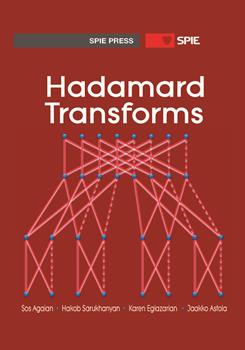|
Previous chapters have discussed many discrete orthogonal transforms (DOTs), such as the discrete fourier transform (DFT), discrete cosine transform (DCT), and discrete Hadamard transform (DHT). These discrete orthogonal transforms are well known for their successful applications in the areas of digital signal processing and communications. As demand for electronic privacy and security increases, a DOT system that resists attacks from possible intruders becomes more desirable. A randomized discrete orthogonal transform (RDOT) provides one way to achieve this goal, and it has already been used in secure communications and encryptions for various forms of digital data, such as speeches, images, and videos. Early efforts on RDOTs have been made in different areas: Cuzick and Lai introduced a sequence of phase constants in the conventional Fourier series; Ferreira studied a special class of permutation matrix that is commutable with the DFT matrix; Dmitriyev and Chernov proposed a discrete M-transform that is orthogonal and is based on m-sequence; Liu and Liu proposed a randomization method on the discrete fractional Fourier transform (DFRFT) by taking random powers for eigenvalues of the DFT matrix; Pei and Hsue improved on this by constructing parameterized eigenvectors as well; and Zhou, Panetta, and Agaian developed a parameterized DCT with controllable phase, magnitude, and DCT matrix size. However, these efforts (1) focused on randomizing one specific DOT rather than a general form of DOT; (2) proposed to obtain RDOT systems from scratch instead of upgrading existent DOT systems to RDOT systems; (3) may have lacked a large set of parameters (for example, in Ref. 38, one parameter has to be a prime number); (4) may not have generated the exact form of RDOT, leading to inevitable approximation errors in implementation; and (5) contained minimal mention of requirements for cryptanalysis. |
|
|


